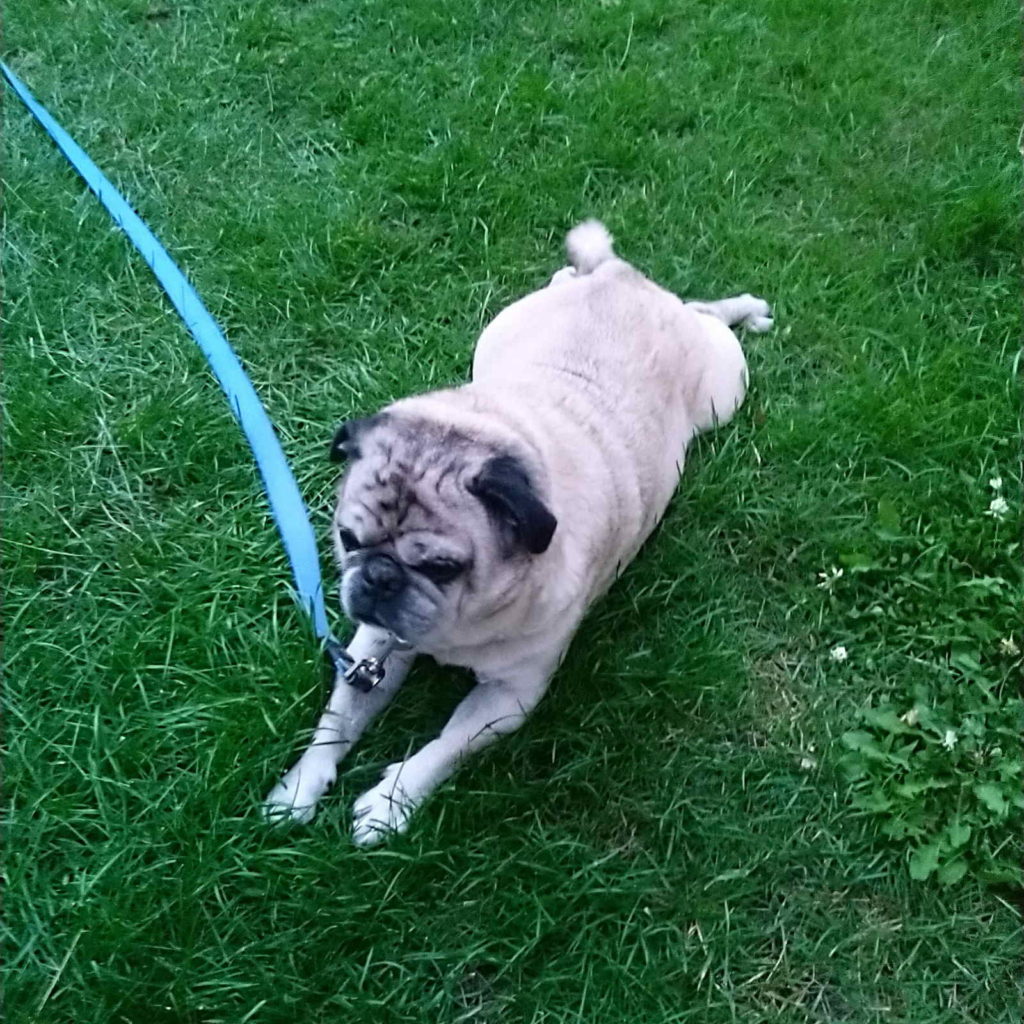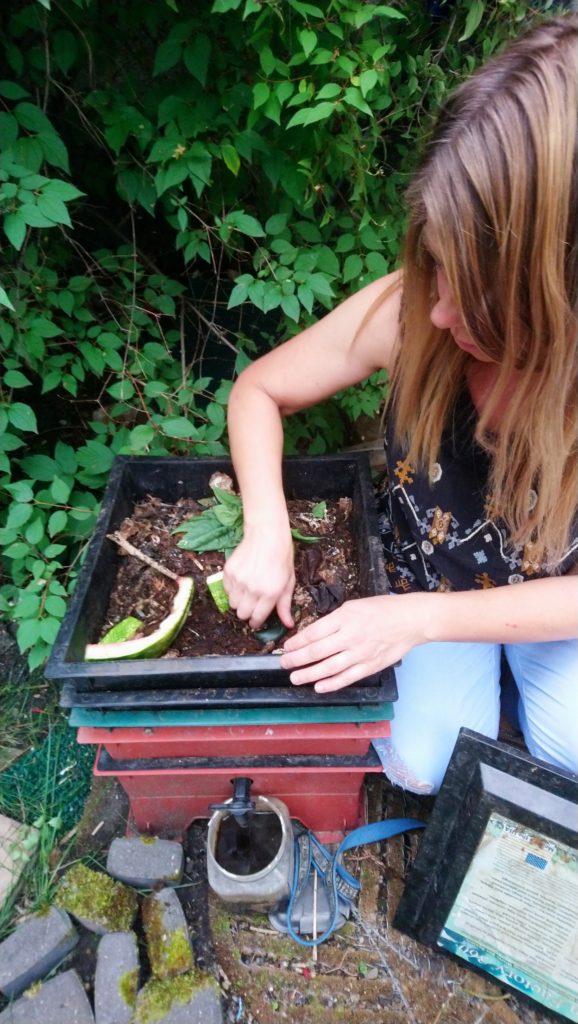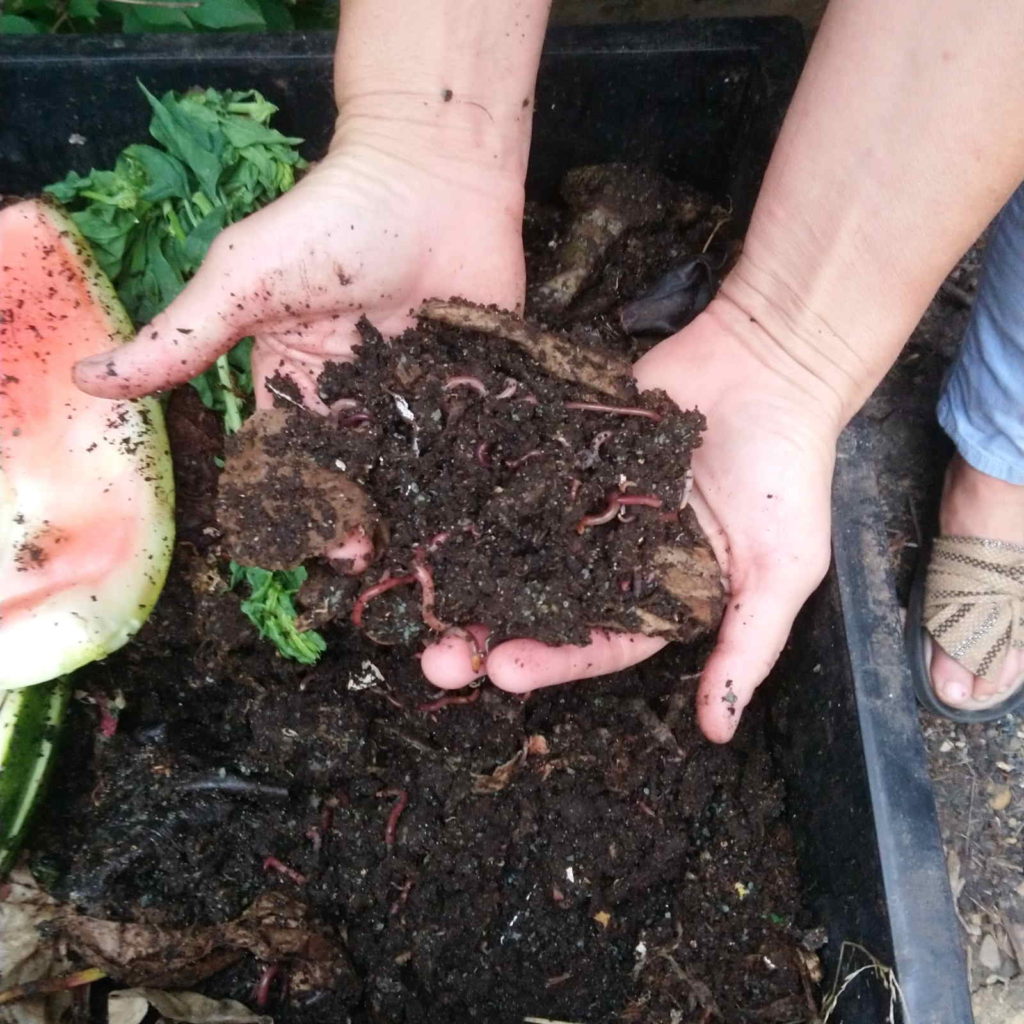Kaz Haykowsky was one of the owners of Spruce Permaculture, a local landscape design firm that brought sustainable, restorative landscapes to front yards and green spaces around Edmonton. Permaculture is a way of thinking about the environment that embraces the connections between humans and nature. Waste Free Edmonton interviewed Kaz to learn more about permaculture, its relationship to waste reduction, and how permaculture concepts can be incorporated into everyday lifestyles.

Andrew: Let’s start with the basics: could you tell me a bit about permaculture?
Kaz: I like to describe permaculture as a system of design that is inspired by nature, by patterns we see in nature, and how nature solves problems. Permaculture can be applied to ecological, physical systems like water or food catchment systems, but it can also be applied to social systems like communities and families. It’s an all-encompassing worldview, almost like a philosophy for approaching life.
It’s important to mention that permaculture originates in Indigenous thinking and teachings, that close relationship with land and nature lifecycles. A lot of people think that permaculture originated from a couple Australians, but they were inspired and drew a lot of their learning from Indigenous Australians, and how they live in harmony with nature and became a part of the cycles and patterns around them. Permaculture in its best, truest form is really Indigenous knowledge, and there’s a debt of gratitude to Indigenous peoples for preserving that knowledge over generations.
A: Are there any Indigenous practices that Canadians have adopted that we might not recognize as permaculture?
K: I think a lot of permaculture we interact with as settler Canadians is the kind of packaged permaculture taught to us by permaculture teachers and design courses. It can be difficult to see permaculture when practiced in other ways, but we could look to Central or South American Indigenous peoples that practice burning of the forests to control the successional cycles of the forests, participating in the lifecycles of the forest, supporting the growth of food for humans but also ecology and niches for a broad range of animals and plants, so that generationally these people manage the forests. The same is true here on the plains and aspen parkland of Treaty 6, where Indigenous people actively managed the bison across the plains and the grasslands by actively burning or by harvesting food ecosystems. When settlers first arrived here, unbeknownst to them, they were stepping into a managed ecosystem in which humans were a part.
A: I’ve seen people treating the reintroduction of bison to their traditional habitats as not just returning the species, but using them to further develop the ecosystem around, recognizing that the animals can benefit their ecosystem in a way humans can’t.
K: It’s valuable not just because it’s a bison, but because it becomes interlinked into this web, where it’s connected with the grasses, with the birds, with the water, and with building food-healthy soil, sequestering water and carbon. If you think about the bison on the plains, the bison didn’t exist without a relationship with Indigenous peoples. You can’t just have bison in isolation from all those systems, including the human system. It’s a crucial mindset to have when we think about how we can make the way we live more in harmony with these cycles. I think there’s a connection there with waste, in that our current waste system is linear, and we need to close that cycle before it’s too late.
A: What experiences drove you to permaculture? Culturally, I don’t think it’s a part of our education system or how we were reared to grow up in a consumeristic world — when did the unlearning begin?
K: For me, my family has always been pretty close to the land. In the last few generations my family has been living in Edmonton, but before then, my family were Ukrainian immigrants who arrived here in the late 1800s and started farming north of Edmonton. They were some of those first settlers who turned these ecosystems into monocultures, and over the past few generations my family has become city dwellers, but I’ve always had a garden.
My father really taught me how to garden and the beauty of taking food out of the garden and preparing it for a family right out of the land. I was always enchanted by that. So I was gardening from the moment I could walk. That was the beginning of my education and this connection with the land. When I went to university my degree initially was in botany, and I decided I didn’t want to be a scientist so I moved into political science and then human geography. It was the intersection of those disciplines, thinking about plant science and politics and how we relate to power and physical space; I didn’t realize at the time, but that is permaculture. Later on, some old friends of mine, Andy and Marcie came up to me with this idea, “we’ve got this idea to practice permaculture in people’s yards, more people need to be doing this”, and I drove right in. I didn’t have my permaculture design certificate at the time, I’d really only watched YouTube videos about permaculture, but I thought this was something I needed to be doing and I’ve been doing it for the past five years.
A: How would you say permaculture is connected to waste reduction?
K: I think waste is intimately connected with permaculture. Waste is an amazing starting point to think about permaculture. There’s this metaphor of a forest, where if you walk through a forest, there is no “waste” in a forest. The only waste you’ll see in a forest is the Coke can someone left or a plastic bag that’s blown in that humans have left behind, but in a functioning ecosystem, nothing is wasted. Everything is plugged back into those cycles. The waste that a tree produces, you can hardly call it waste, because it’s the stuff of life for the fungi that live on the forest floor or the excess seeds from the tree that become the winter sustenance for the mice and voles that live in the forest. Humans, in the last few hundred years, have become very good at producing waste. We haven’t remembered the lessons that nature has taught us for millennia, that you have a responsibility for the things you create from when you create it to when it’s disposed. You can make your waste not a liability to something else, but a gift. A tree that sheds its leaves doesn’t do that to mess up someone’s backyard, it’s a gift to the soil and the creatures that live on the ground, which benefits the tree. Thinking about waste is a great inspiration to start permaculture, because it’s about creating yields out of waste of connecting needs out of the waste that’s being produced.
A: Home composting is one way for people to reduce waste in their own ecosystem — what are some other ways people can apply permaculture principles to their own lives?
K: There’s a thought experiment in permaculture — a needs and yields analysis. It often comes up in permaculture, and it’s the idea of assessing any element in your system and finding out what it needs in order to thrive, and what it produces, whether it’s a net positive or a liability. Then you balance it out, connect elements in your system in a way that reduces or eliminates waste and work. Work is a waste of time — forests don’t have waste, and forests don’t have work. That’s the way we should be interacting with our ecological systems.
In a needs and yields analysis, you can think about anything in your yard. Something like the roof of your house — what does it yield? It yields shelter, heat mass, but it also collects water. When that water flows through your eavestroughs and down along your house, that can be a liability if it doesn’t get far enough away from your house. It could get into your foundation, unsettling your house, or activating your sump pump, which is waste. You can then turn that liability into a positive, collecting that water into a rain barrel near your house. It’s something we worked with quite a bit at Spruce Permaculture, creating water catchment systems. We also avoided buying any new plastic products, we were always digging landscape fabrics out of people’s gardens or collecting cardboard out of recycling bins and talking to shippers and receivers to get their cardboard. We were probably some of the only people leaving the Eco Station or recycling depot with more garbage than we came in with. Those were free resources that would otherwise be landfilled and was a really satisfying way of plugging waste back into the system.
A: On the topic of gardens, what do you think about weeds in a permaculture landscape?
K: Weeds are kind of a contentious issue in the world of permaculture. You always want to begin with long, protracted observation before you go in and change something. You walk around a yard and see a lot of creeping bellflower or purple loosestrife, something considered a noxious weed by the city or province. But what is that weed trying to tell you? What is it telling you about the soil, how it’s been worked with in the past? These plants are not nefarious, they are making an existence on this land, doing the best they can and filling a niche.
Some permaculturists might say that plant has as much a right to be there as anything else, so can you find a yield for it? Or is it so much of a liability that it does need to be converted, how can you make that process a regenerative one, turning that weed into something else. We can learn something about the growing conditions — maybe a site has a lot of water, so you try to grow something that outcompetes the weed. You accept the feedback and learn how best to use that part of the garden.
A: One final question for Waste Free Edmonton — why is waste reduction important to you personally?
K: Waste is one of the biggest products of our lives, if we really think about what humans make today — so few of us are actually making real, tangible things, but we are making a lot of waste and we need to take responsibility for it. It doesn’t have to be a nasty or bitter sort of thing, it can be inspiring to think about your waste, because our waste is one of the main ways we interact with our ecology whether we think about it or not. The waste we produce is probably our greatest impact on our land. By taking ownership of that, it can actually be quite empowering.
When we eat, when we live in our homes, when we give gifts to each other or ourselves — by doing that, are we leaving scars on the land? Are we mining the tops of mountains, deforesting ancient forests, drawing or poisoning water that’s been clean for millennia? Or, when we do those necessary human things, can we leave the land better, can we heal the wounds we’ve left? When the food we eat no longer sustains us or the home we live in doesn’t support us, does that become a scar on the land and lead to more pain or suffering? Or can that plug back in and become something valuable to ourselves and others?
To me, thinking about waste reduction and interacting with the land differently is almost an ethical or spiritual practice. It’s a beautiful relationship to be in, to own our capacity to be good actors in the world by living our lives. Waste reduction should be a joyful process, otherwise humans aren’t going to do it. Like composting: it shouldn’t be a chore, it should be fun and regenerative, doing it in communities and together. If we can start to do some of these things together and make them rewarding, we’ll have a much easier time addressing our problems of waste.
Permaculture can be implemented on a range of levels, from micro to macro. Whether it’s looking at your garden more critically or the way you consume resources from your broader environment, the lessons to be learned from permaculture are applicable to numerous concepts in your daily life.
Resources:







